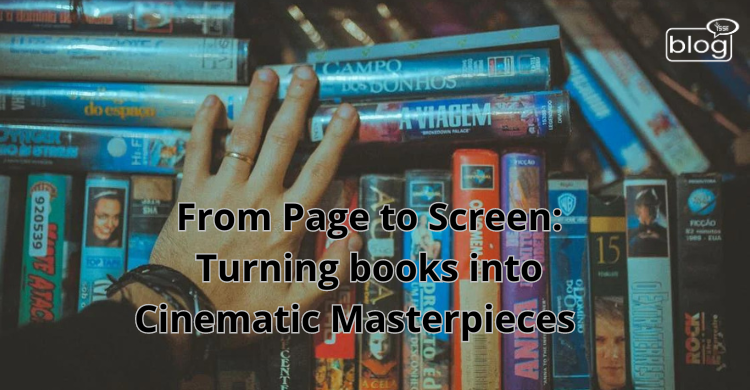As human beings, we all love entertainment. The sources of entertainment are vast. But among them, books and movies stand out by a great margin compared to others. But some people are fans of movies, and some people love reading books. The books provide us with the whole narrative of a story, every detail is mentioned, and every scene needs imagination. But movies don’t need that. Movies provide you with visuals, audio, and most importantly the environment and atmosphere.
Whether you are a movie lover or not, watching our favorite books turn into movies builds great anticipation inside us. We expect the movie to be a resemblance to our imagination. We want to see every detail of the book, just like we imagined while reading. That’s why book-to-movie adaptations are often heavily criticized. The details of imagination are subjective which makes the film-making unique and challenging.
To analyze how book-to-movie adaptations are done, we need to discuss the differences between these two mediums.
Narrative Structure:
Book
The author has an unlimited amount of time to create and develop a plot, subplot, and character arcs. From the environment and atmospheric details to the emotions of the characters, everything can be mentioned in the books, which helps us to imagine and get a better understanding of the significance of each detail in the scene.
Movie
A movie usually lasts between 90 minutes to three hours. The filmmaker is constrained by time and has to optimize the movie by deciding what to add and what to eliminate. Certain plot and character developments are ignored in the movie which sometimes leads to a loss of depth and complexity.
Descriptive language vs Visual imagery:
Book
Authors use descriptive language to provide details of the scene to stimulate imagination and fantasy in reader’s minds. Each reader may visualize and imagine the same scene differently.
Movie
Visual imagery or demonstration brings the story to life. The vision may not be aligned with the imagination of each viewer which makes it either a strength or a limitation. To create stunning and immersive worlds, visual effects, and cinematography are a must.
Pacing :
Books
The pacing of a book depends solely on the reader and how they want to read it. This allows for a more personalized experience.
Movie
The pacing of a movie is determined by the filmmakers. The pacing of the movie is challenging to maintain because it requires a balance between keeping the audience engaged and ensuring a smooth progress and development of the story and characters.
Elements of a Successful Adaptation:
Respect for the Source Material:
A filmmaker must understand the core themes, characters, and messages underlying the words of the author. He has to make thoughtful changes without altering the theme of the movie.
Strong Screenwriting:
The screenplay has to be well-written as it is the foundation of a successful film. The key to good screenwriting is effectively condensing the story without losing the essence of the story.
Creative Vision:
The creative vision includes the innovative use of visual effects, cinematography, and production design. This can elevate the story and compliment the book. Although this is the most challenging part of film production, as this depends totally on the vision of the director. Even a single misstep can cause the film to be heavily criticized and flagged as unnecessary.
Here are some great book-adapted movies that have been critically acclaimed:
Classics with Faithful Adaptations:
- To Kill a Mockingbird.
- The Lord of the Rings Trilogy
- The Shawshank Redemption
- Pride and Prejudice
Adaptations with Creative Interpretations:
- The Godfather
- The Silence of the Lambs
- No Country for Old Men
- Blade Runner
Recent Adaptations:
- Little Women
- Dune
- Call Me By Your Name
- The Perks of Being a Wallflower.
A movie adaptation is a complex form of art that requires great vision, screenwriting, and visual imagery. By keeping the focus on the core story and maintaining the balance between the strengths and limitations, cinematic masterpieces can be created that can attract the audience, even if they differ slightly from the reader’s imagination. The film industry is evolving continuously and the future of book-adapted movies seems promising more than ever.
To read more blogs like this, click here.
Writer,
Abdul Ahad Bin Feroz
Intern, Content Writing Department,
YSSE

